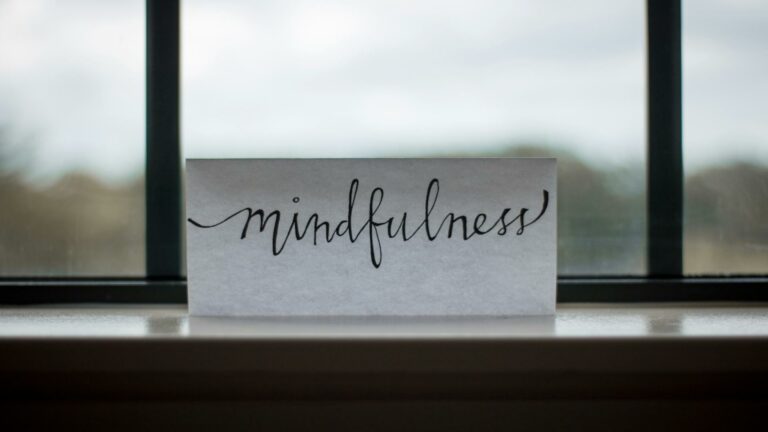Improve Website Header Images: Boost Your Site’s Visual Appeal
Elevating Your Website’s First Impression: Mastering Header Image Design
In today’s digital landscape, first impressions matter more than ever. Your website’s header image is often the first thing visitors see, making it crucial to improve website header images for maximum impact. A well-crafted header image can set the tone for your entire site, conveying your brand’s essence and engaging visitors from the moment they land on your page.
Key Strategies to Enhance Your Header Images
- High-Quality Visuals: Opt for crisp, high-resolution images that look sharp on all devices. Using high-quality photos is the first requirement for your website header image.
- Brand Alignment: Ensure your header image reflects your brand’s personality and values. This consistency helps reinforce your brand identity across your site.
- Responsive Design: Create header images that adapt seamlessly to different screen sizes, maintaining their impact on both desktop and mobile devices.
- Strategic Text Overlay: If incorporating text, use techniques like color blocks or text shadows to enhance readability against the background image.
- Emotional Connection: Choose images that evoke the right emotions in your target audience, fostering a connection from the first glance.
Remember, the goal is to create a header that not only looks visually appealing but also serves a strategic purpose in your overall web design. By implementing these techniques, you can significantly improve website header images and create a more compelling user experience.
At Web Design London, we specialize in crafting header images that captivate and convert. Our expert designers understand the nuances of effective visual communication, ensuring your website makes a lasting impression from the very top.
Why Header Images Matter
The Importance of Improving Website Header Images
Before diving into the specifics of how to improve website header images, let’s understand their significance in creating a compelling online presence:
- Create a strong first impression that captures visitors’ attention
- Convey your brand’s identity and message effectively
- Guide visitors’ attention to key elements on your website
- Enhance overall user experience and navigation
- Improve engagement and reduce bounce rates
With these benefits in mind, let’s explore the top strategies to improve website header images and elevate your online presence.
Key Strategies for Enhancing Header Images
1. Choose high-quality images: Opt for crisp, clear images that reflect your brand and resonate with your audience. Avoid blurry or pixelated visuals that can detract from your site’s professionalism.
2. Optimize for responsiveness: Ensure your header images look great on all devices by implementing responsive design techniques. This may include using flexible image sizes or creating separate versions for different screen sizes.
3. Incorporate relevant text: Overlay your header image with compelling copy that reinforces your brand message or highlights key offerings. Ensure the text is legible and contrasts well with the background.
4. Use white space effectively: Don’t overcrowd your header. Utilize white space to create a clean, uncluttered look that allows key elements to stand out.
5. Implement strategic CTAs: Include clear and compelling calls-to-action (CTAs) within or near your header image to guide visitors towards desired actions.
By implementing these strategies, you can significantly improve website header images and create a more engaging, effective online presence that resonates with your target audience.
1. Choose High-Quality, Relevant Images
Elevating Your Website’s First Impression: Improving Header Images
The foundation of an impressive website lies in its header image, serving as the digital face of your brand. When looking to improve website header images, consider these essential factors:
- High-Resolution Quality: Utilize images with a minimum resolution of 1920×1080 pixels for full-width headers to ensure crisp, clear visuals across all devices. High-quality photos are crucial as low-resolution images can lead to a poor user experience.
- Brand Alignment: Select images that resonate with your brand’s message and appeal to your target audience. Your header should visually communicate your company’s values and offerings at a glance.
- Unique Imagery: Avoid generic stock photos that can make your site blend in with competitors. Instead, invest in custom photography or illustrations that set your brand apart.
- Color Harmony: Ensure the header image complements your website’s color scheme and overall design aesthetic. This creates a cohesive look that enhances user experience and brand recognition.
- Responsive Design: Optimize your header image for various screen sizes to maintain its impact across desktop and mobile devices. Consider using responsive design techniques to adjust the image’s layout and focus for different viewports.
Remember, your header image is not just decorative; it’s a powerful tool for engagement. Incorporating relevant visuals or even video content can significantly enhance user interaction and convey your brand’s story more effectively.
By focusing on these aspects, you can create a header that not only looks impressive but also functions as an integral part of your website’s user experience and marketing strategy. Investing time and resources in perfecting your header image can lead to increased visitor engagement and better overall performance of your website.
2. Optimize for Performance
While high-quality images are essential, it’s equally important to optimize them for web performance. To improve website header images without sacrificing load times:
- Compress images using tools like TinyPNG or ImageOptim
- Use modern image formats like WebP for better compression and quality
- Implement lazy loading for header images on longer pages
- Consider using CSS sprites for multiple small header images
Our team at Web Design London specializes in optimizing images for peak performance, ensuring your site loads quickly without compromising visual quality.
3. Incorporate Responsive Design
Optimizing Website Header Images for All Devices
In today’s mobile-first world, it’s crucial to improve website header images for all screen sizes. A well-designed header can significantly enhance user experience and brand perception across devices. Here are some effective techniques to optimize your header images:
- Implement responsive design: Use flexible images that adapt to different screen widths, ensuring your header looks great on both mobile devices and desktop computers.
- Create multiple versions: Develop various versions of your header images for different breakpoints, allowing for optimal display across a range of screen sizes.
- Utilize CSS media queries: Employ media queries to adjust image positioning and sizing based on the user’s device, providing a tailored experience for each screen type.
- Adopt a mobile-first approach: Design your header images with mobile users in mind first, then scale up for larger screens. This ensures a smooth experience for the growing number of mobile users.
- Optimize image file sizes: Compress and optimize your header images to reduce load times without sacrificing quality, improving overall site performance.
- Use SVG for logos and icons: Incorporate scalable vector graphics (SVG) for logos and icons within your header to ensure crisp rendering at any size.
Remember, your website’s header is often the first element visitors see, making it a critical component of your site’s design. Responsive components in your header can significantly improve user engagement and navigation across all devices.
By implementing these strategies, you can create header images that not only look stunning across all devices but also contribute to a seamless and enjoyable user experience. Consider working with Web Design London’s responsive design experts to create header images that perfectly represent your brand and engage your audience, regardless of the device they’re using.
4. Enhance with Typography
Elevate Your Website with Stunning Header Images
Combining compelling visuals with powerful typography can significantly improve website header images, creating a lasting first impression on your visitors. To achieve this, consider implementing these expert-recommended strategies:
- Font Selection: Choose fonts that complement your brand identity and image style. Carefully selected typefaces can enhance the overall aesthetic and convey your brand’s personality.
- Size and Weight Experimentation: Play with font sizes and weights to create visual hierarchy and emphasis. This technique helps guide the viewer’s eye to key information.
- Color Contrast: Utilize contrasting colors between your text and background to ensure optimal readability. High contrast ratios are essential for accessibility and user experience.
- Modern Design Techniques: Implement text overlays or cut-out effects to achieve a contemporary look that stands out from the competition.
- Image Quality: Ensure your header images are high-resolution and optimized for web performance to maintain visual appeal across all devices.
Our experienced design team specializes in creating captivating header images that align with your brand’s vision. We can help you select and implement typography that not only enhances your header images but also reinforces your brand message effectively. By focusing on these elements, you’ll create a powerful visual impact that engages visitors and sets the tone for your entire website.
5. Implement Strategic Color Usage
Color plays a crucial role in the impact of your header images. To improve website header images through color:
- Use your brand’s color palette for consistency
- Apply color overlays or gradients to create depth and mood
- Consider color psychology to evoke specific emotions
- Ensure sufficient contrast for accessibility and readability
At Web Design London, we understand the power of color in web design and can help you create a color strategy that enhances your header images and overall site aesthetic.
6. Incorporate Motion and Interactivity
Elevate Your Website with Dynamic Header Images
To truly improve website header images and create a lasting impression, consider incorporating these dynamic elements:
- Implement subtle animations or parallax scrolling effects to add depth and visual interest
- Use video headers for more engaging content, capturing visitors’ attention immediately
- Add interactive elements like hover effects or clickable areas to encourage user engagement
- Consider using sliders or carousels to showcase multiple header images, highlighting various aspects of your brand
When designing your header, it’s crucial to select high-quality images that align with your brand identity. Ensure that the chosen visuals complement your website’s color scheme and overall aesthetic.
To further enhance your header’s effectiveness:
- Optimize images for faster loading times without compromising quality
- Ensure responsiveness across different devices and screen sizes
- Incorporate clear and concise messaging that communicates your value proposition
- Use white space strategically to create a clean, uncluttered look
By implementing these advanced techniques, you can create a header that not only looks visually stunning but also improves user experience and supports your website’s goals. Remember, a well-designed header sets the tone for your entire site and can significantly impact visitor engagement and conversion rates.
7. Align with User Intent
When working to improve website header images, it’s essential to consider user intent:
- Choose images that clearly communicate your product or service
- Use directional cues to guide users to important content or calls-to-action
- Ensure the header image supports the page’s primary goal
- A/B test different header images to determine which resonates best with your audience
Web Design London’s user experience experts can help you create header images that not only look great but also drive conversions and engagement.
8. Maintain Brand Consistency
Consistency is key when you improve website header images across your site:
- Use a cohesive style and theme for all header images. This ensures that visitors recognize your brand instantly, creating a seamless experience as they navigate through different pages.
- Incorporate your logo or brand elements subtly. This not only reinforces brand identity but also helps in establishing trust with your audience. For more on this, check out the tips from Strikingly.
- Maintain consistent image proportions and layouts. Consistency in size and layout contributes to a professional appearance, making your site more visually appealing. Refer to guidelines from Muffin Group for best practices.
- Ensure header images align with other brand visuals across platforms. This alignment enhances brand recognition and ensures a unified message across all marketing channels.
Our branding specialists can help you develop a consistent visual language for your header images that strengthens your overall brand identity. By following these strategies, you can create header images that not only attract attention but also engage users effectively, as discussed in detail by Shakuro.
9. Optimize for SEO
Optimizing Website Header Images for SEO
When you improve website header images, it’s crucial to consider search engine optimization (SEO) to enhance your site’s visibility and performance. Here are some key strategies to implement:
- Use descriptive, keyword-rich file names: Instead of generic names like ‘IMG001.jpg’, use descriptive file names that include relevant keywords, such as ‘eco-friendly-home-solutions.jpg’.
- Add alt text to all header images: Incorporate relevant keywords in your alt text to provide context for search engines and improve accessibility.
- Implement schema markup for rich results: Use structured data to help search engines understand your header images and potentially display them in rich results.
- Optimize image file sizes: Compress images and use appropriate file formats to ensure header images don’t slow down page load times, which is a critical factor in SEO and user experience.
- Create responsive header images: Ensure your header images display correctly across all devices to improve mobile SEO and user engagement.
By following these best practices, you can significantly improve your website’s SEO performance through optimized header images. Remember, visual elements play a crucial role in both user experience and search engine rankings, making them an essential component of your overall SEO strategy.
10. Regular Updates and Testing
Strategies to Improve Website Header Images
To continuously improve website header images, implement a comprehensive strategy that enhances visual appeal and user engagement. Here are some effective approaches:
- Regular Updates: Refresh header images seasonally or for special promotions to keep your website looking current and relevant.
- User Feedback: Conduct user testing to gather valuable insights on header image effectiveness and make data-driven improvements.
- Performance Analysis: Closely monitor metrics such as time on page, bounce rate, and click-through rates to assess the impact of your header images on user behavior.
- Design Trends: Stay updated on the latest web design trends and incorporate new techniques to keep your header images fresh and engaging.
- Optimization for Different Devices: Ensure your header images are responsive and look great on various screen sizes, from mobile devices to large desktop monitors.
- A/B Testing: Experiment with different header image variations to determine which designs resonate best with your audience.
Implementing these strategies can significantly improve your website header images and overall user experience. For businesses looking for expert assistance, professional web design services can provide ongoing support and maintenance to ensure your header images remain impactful and effective over time.
Conclusion: Transform Your Site with Improved Header Images
Elevate Your Website’s First Impression
Implementing strategies to improve website header images can significantly enhance your site’s visual appeal, user engagement, and overall effectiveness. A well-designed header is crucial for making a strong first impression and guiding visitors through your site.
Key Strategies for Impactful Header Images
- High-Quality Visuals: Use professional, high-resolution images that align with your brand identity. Opt for high-resolution images to ensure clarity across all devices.
- Responsive Design: Ensure your header image adapts seamlessly to different screen sizes, maintaining its impact on both desktop and mobile devices.
- Compelling Copy: Integrate clear, concise text that communicates your value proposition effectively. Consider using bold typography to catch users’ attention.
- Strategic Use of White Space: Incorporate adequate spacing to enhance readability and focus attention on key elements.
- Consistent Branding: Align your header image with your overall brand aesthetics, including color scheme and style.
At Web Design London, we’re committed to helping businesses create stunning, high-performing websites that stand out in today’s competitive digital landscape. Our expert team can help you implement the latest design practices to create headers that not only look great but also drive conversions.
Ready to take your website’s header images to the next level? Contact Web Design London today for a consultation. Our team of expert designers, developers, and SEO specialists are here to help you create a website that not only looks amazing but also drives results for your business.
Let’s work together to improve your website header images and transform your online presence!













